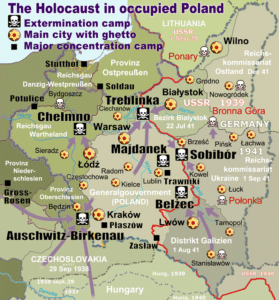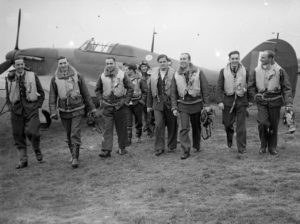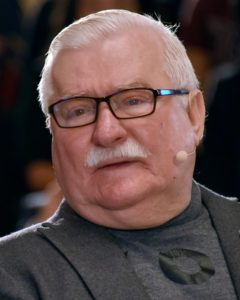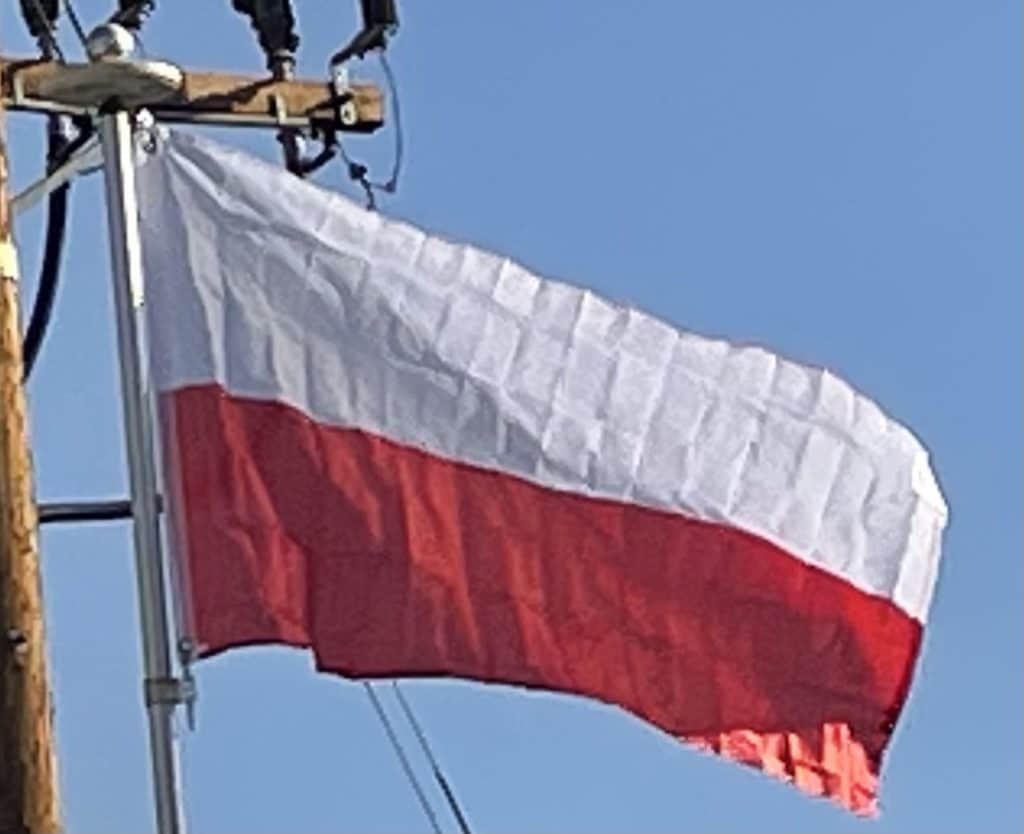Nazi German forces under orders from Adolf Hitler set up six German extermination camps in occupied Poland, including Treblinka, Majdanek and Auschwitz. The Germans transported millions of Jews from across occupied Europe to be murdered in those camps.

Altogether, 3 million Polish Jews – approximately 90% of Poland’s pre-war Jewry – and between 1.8 and 2.8 million ethnic Poles were killed during the German occupation of Poland, including between 50,000 and 100,000 members of the Polish intelligentsia – academics, doctors, lawyers, nobility and priesthood. During the Warsaw Uprising alone, over 150,000 Polish civilians were killed, most were murdered by the Germans during the Wola and Ochota massacres. Around 150,000 Polish civilians were killed by Soviets between 1939 and 1941 during the Soviet Union’s occupation of eastern Poland (Kresy), and another estimated 100,000 Poles were murdered by the Ukrainian Insurgent Army (UPA) between 1943 and 1944 in what became known as the Wołyń Massacres. Of all the countries in the war, Poland lost the highest percentage of its citizens: around 6 million perished – more than one-sixth of Poland’s pre-war population – half of them Polish Jews. About 90% of deaths were non-military in nature.

In 1945, Poland’s borders were shifted westwards. Over two million Polish inhabitants of Kresy were expelled along the Curzon Line by Stalin. The western border became the Oder-Neisse line. As a result, Poland’s territory was reduced by 20%, or 77,500 square kilometers (29,900 sq mi). The shift forced the migration of millions of other people, most of whom were Poles, Germans, Ukrainians, and Jews.
Post-War Communism:
At the insistence of Joseph Stalin, the Yalta Conference sanctioned the formation of a new provisional pro-Communist coalition government in Moscow, which ignored the Polish government-in-exile based in London. This action angered many Poles who considered it a betrayal by the Allies. In 1944, Stalin had made guarantees to Churchill and Roosevelt that he would maintain Poland’s sovereignty and allow democratic elections to take place. However, upon achieving victory in 1945, the elections organized by the occupying Soviet authorities were falsified and were used to provide a veneer of legitimacy for Soviet hegemony over Polish affairs. The Soviet Union instituted a new communist government in Poland, analogous to much of the rest of the Eastern Bloc. As elsewhere in Communist Europe, the Soviet influence over Poland was met with armed resistance from the outset which continued into the 1950s.

Labor turmoil in 1980 led to the formation of the independent trade union “Solidarity” (“Solidarność”), which over time became a political force. Despite persecution and imposition of martial law in 1981, it eroded the dominance of the Polish United Workers’ Party and by 1989 had triumphed in Poland’s first partially free and democratic parliamentary elections since the end of the Second World War. Lech Wałęsa, a Solidarity candidate, eventually won the presidency in 1990. The Solidarity movement heralded the collapse of communist regimes and parties across Europe.
1990s to Present:
A shock therapy program, initiated by Leszek Balcerowicz in the early 1990s, enabled the country to transform its socialist-style planned economy into a market economy. As with other post-communist countries, Poland suffered declines in social and economic standards, but it became the first post-communist country to reach its pre-1989 GDP levels, which it achieved by 1995 thanks largely to its booming economy.
